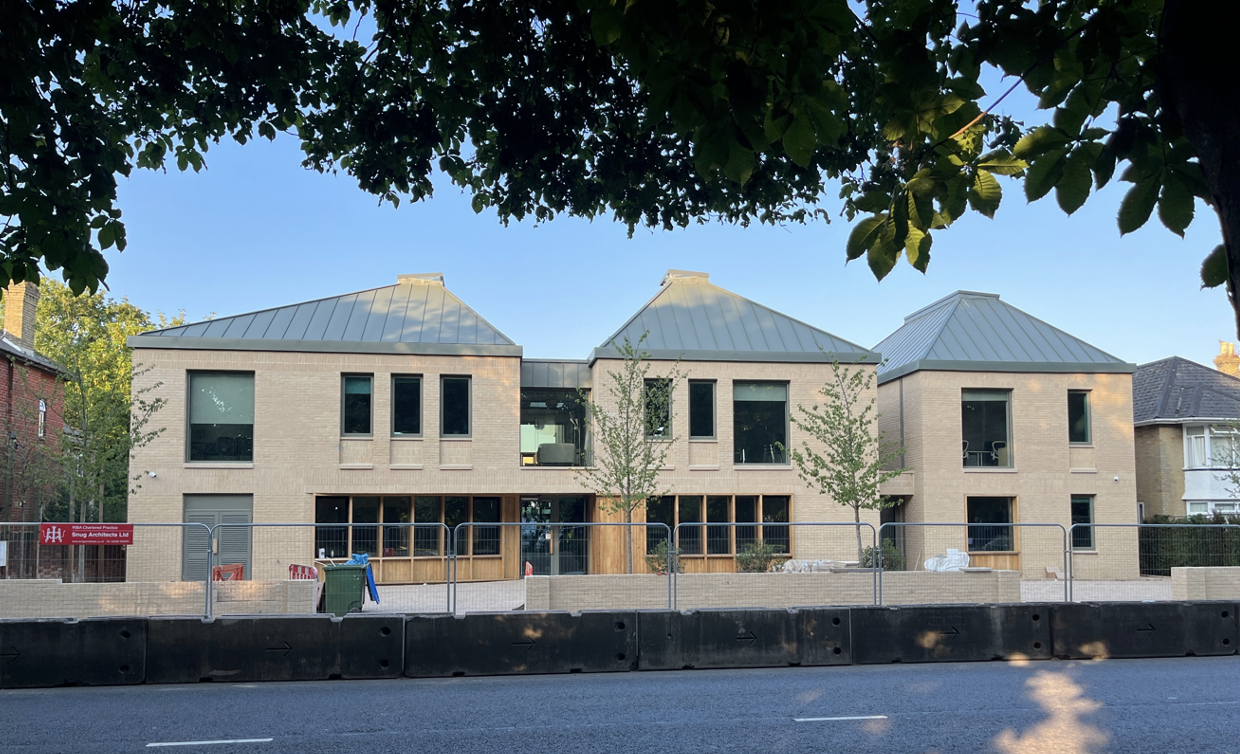Occupancy Sleepover At Hope Street
It’s not often as the architect you get to stay in the places you have designed. But last night I seized the opportunity to have an ‘occupancy sleepover’ and experience what it is actually like to live in one of our designs.
Prior to Hope Street becoming fully occupied with women residents, One Small Thing who are procuring and delivering the vision of Hope Street, invited me to experience it first-hand. Hope Street is a pioneering residential community for women and their children who have experienced trauma and are in the justice system.
A single occupancy sleepover is not the same of being part of the lived community when all is operational, but does provide a perspective on what it feels like to dwell in the space rather than walking around in architectural inspection.
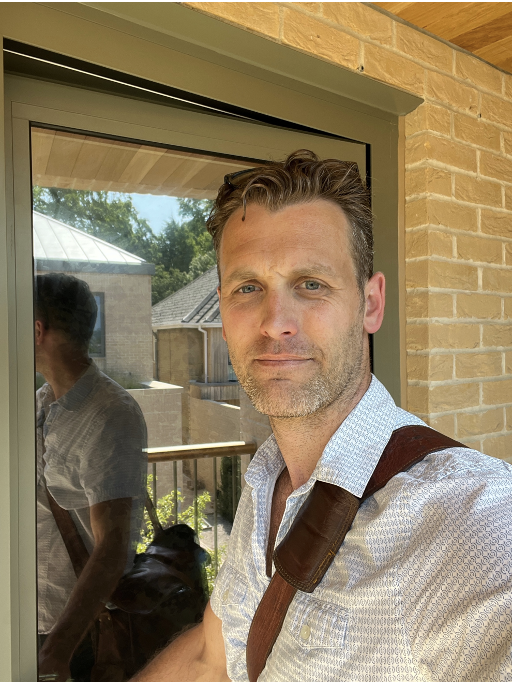
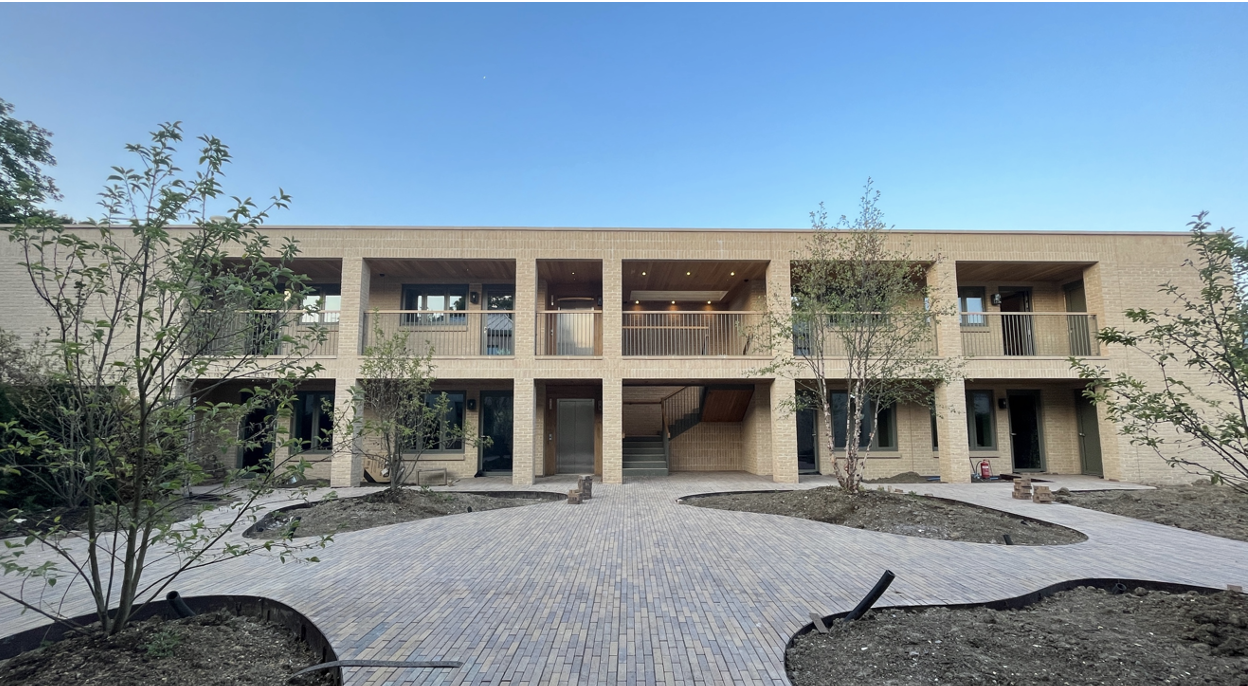
- Light and Sound
I have been to site at various points in the working day but actually to see how the gardens and the inside of a flat feel at different points of the day was revealing. It was a glorious sunny June day and the sun tracks from the rear of the building where the bedrooms are situated, to the front of the building illuminating the living room and deck access.
In the morning the first floor Oriel windows give the bedrooms a bright and optimistic start to the day. By the evening, leaning over the oak handrail to the deck access balustrade I was able to watch the late sun set over the Hub building in front and trees beyond.
Once the contractors finishing the landscape had left for the day, the site was much quieter and the therapeutic garden felt like the protected sanctuary it was designed to be. The residential building sits into its residential surrounding and the sounds of the city are present but distant.
There will probably be much more vibrancy when all the flats are occupied. However, the opportunity remains for Hope Street to straddle the line between being a safe, peaceful sanctuary, yet remaining within and in touch with society.
At night the triple glazed windows to the bedroom mean it is very quiet. However, when you open the restricted bedroom window the bedroom door rattles which you can only appreciate as you lie in bed waiting to drift off.
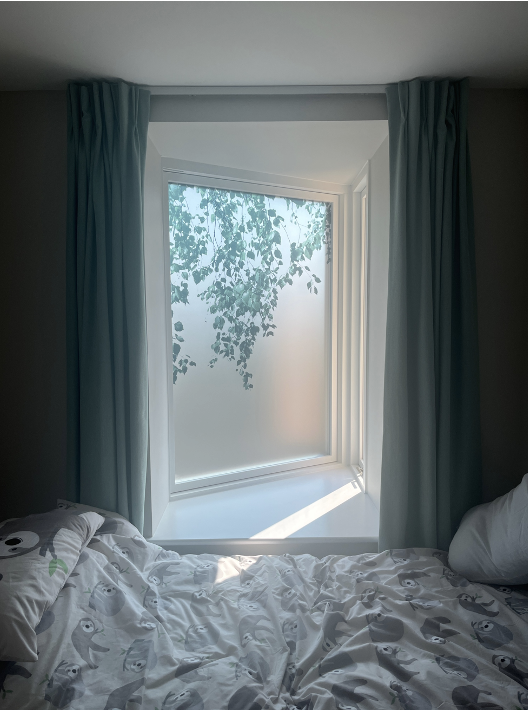
2. Feels like home
When so much effort has been collectively put in to design Hope Street as a ‘home’ and avoid the feeling of an institution, it was satisfying and perhaps a relief to feel at home and enjoy staying the night.
Design decisions such as the size of the bedrooms and the aspect from open plan living spaces were considered at length, and each individually are questionable as to whether they make ‘the big difference’, especially to be justified on a spreadsheet. However, as the name of the charity suggests, each aspect is ‘one small thing’ that contributes to the whole, and the sum of these interrelated decisions do define whether the building ‘feels like home’.
In conversation with One Small Thing’s senior team about their feelings of staying over we have already made changes in the manifestation package. The glazed front doors that open to the living spaces are important for natural light, but now have much greater privacy at night time from the views of those in the Hub. Especially with a trauma informed design mindset, privacy in your own home space is critical to ‘feeling at home’. It was good to experience the positive effect these changes had made.
Another thing that makes a home is the inhabitation of the building, obviously with people, but also in the choice of furniture, pictures and nick nacks. We have discussed the tone of the building to be biophilic and textured, and domestic not institutional. This meant not getting too architecturally ‘cool’ but finding warm, inviting relatable fixtures, finishes and furnishings.
The quirky doorstop that isn’t taking itself too seriously taps into a very relatable human connection and made me smile.
I probably wouldn’t have thought to specify it, but good choice OST!
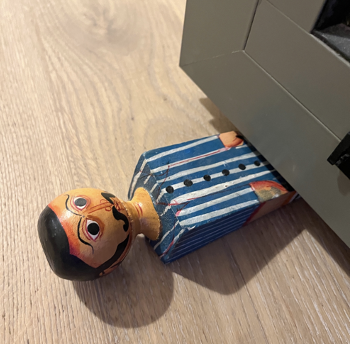
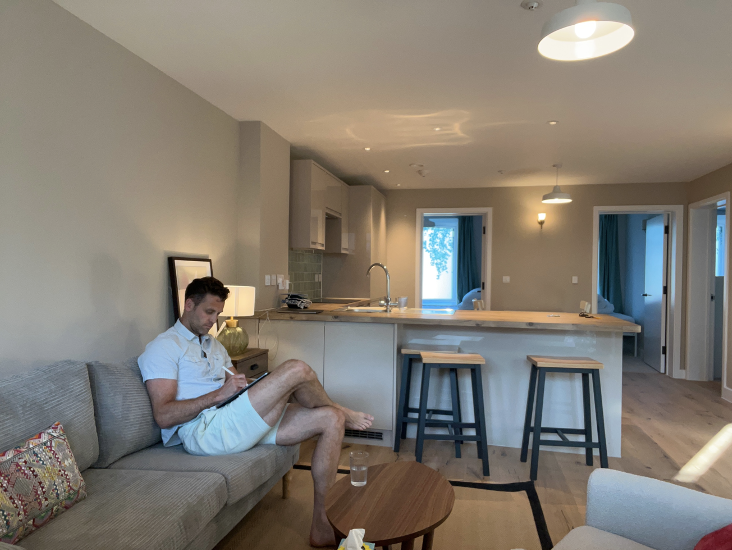
3. Where to sit?
When you are visiting, inspecting and snagging you are transient and mobile. When you stop and rest, you sit and relax. Where would I choose to perch, sit, work, eat and relax?
Designing in moments for people to dwell and find their ‘special place’ is part of creating an experience in architecture. So having time to sit and dwell, I was looking forward to trying some of those out and to see if they lived up to my expectation.
The first was the bedroom Oriel window seat. With the residential building located close to the rear boundary, projecting oriel windows manage obscured privacy windows with neighbours. An angled clear glass window gives aspect along the boundary for the room and avoids a claustrophobic condition.
We had envisaged the oriel windows being a nice human sized space to curl up. Despite my long legs this was indeed a very private space within the modest bedrooms, to have what feels like one’s own space and to recharge. A place of solitude and privacy away from community.
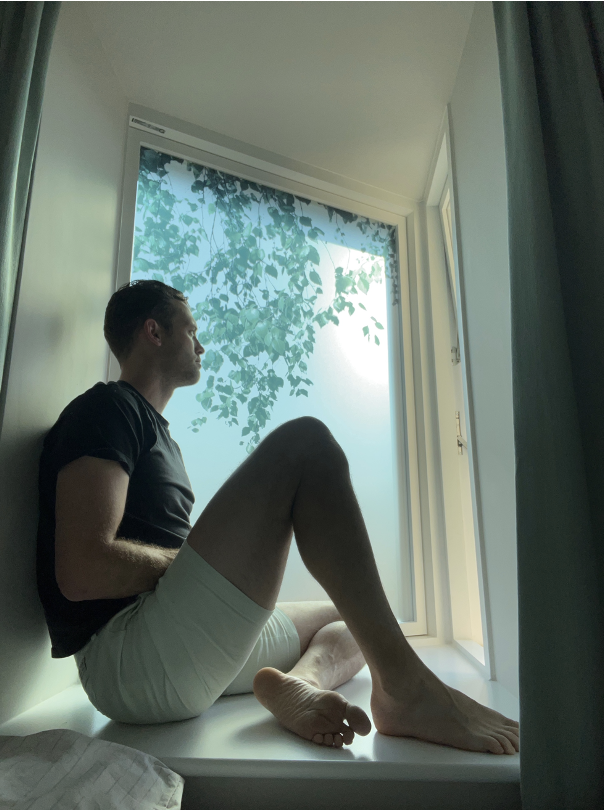
The second was the covered external bench that is recessed into the rear
of the Hub and looks over the middle of the therapeutic garden.
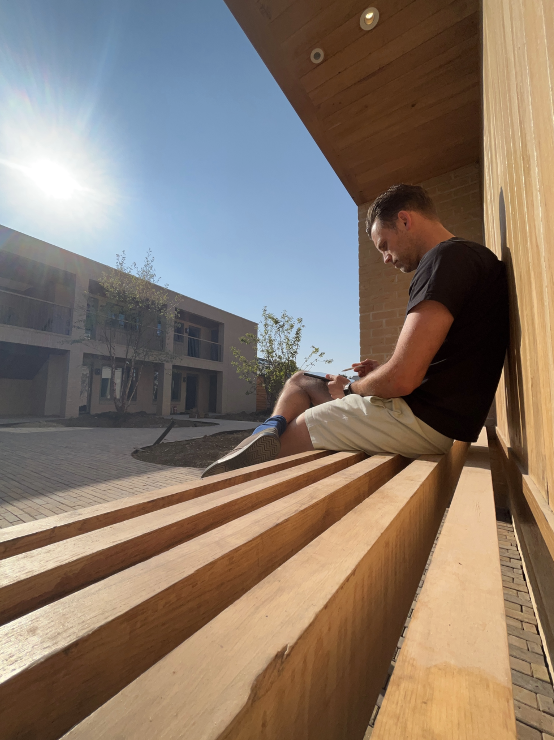
It came as a bonus space during the design process but delivers an important space to enjoy the garden whether it is in the morning sun, evening shade or sheltered for the rain. A place to get away or chat together.
An oak slatted bench within an oak enclosure, it is situated at the edge of the garden providing the architectural idea of ‘prospect and refuge’. This is perhaps more significant in a trauma informed context as ‘feeling safe’ and ‘connecting with nature’ are part of feeling at home and healing.
So far the bench has been a favourite of tradesmen working on site but it was an inviting place in the quiet evening and the morning sun and I did dwell.
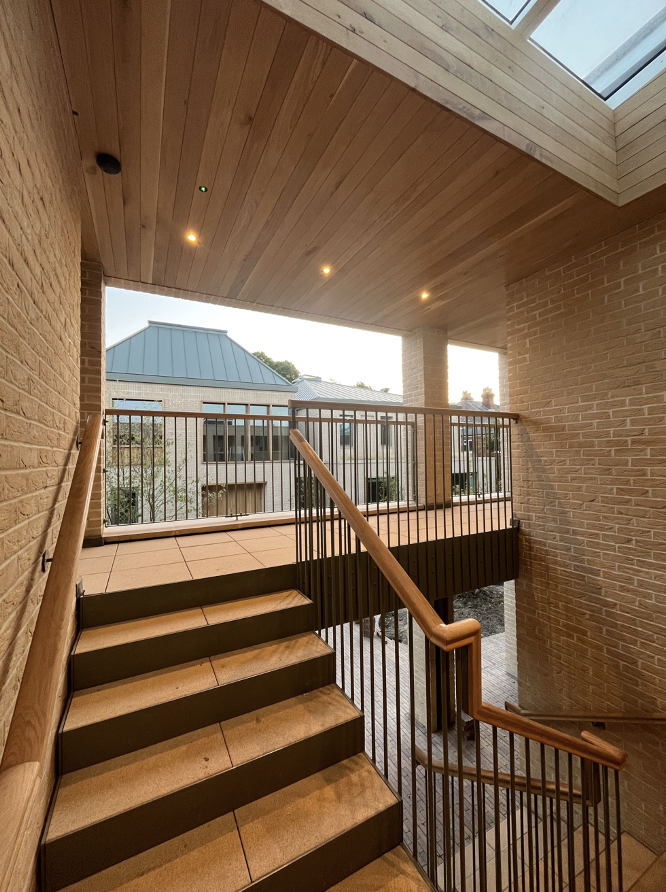
Summary
I have come away enriched with the experience of occupying our design even over a short sleepover.
It has revealed that it is not just post occupancy interviews that are important as part of learning lessons, but that there is a place for appreciating first-hand the experiences you design for others.
It has strengthened my belief that the question ‘Is it worth it?’ to design moves is often yes, even if it can’t directly be related to monetary value. However, it is not always the biggest moves that have the biggest effect.
Rather, proper consideration about what the design and inhabitation aims to achieve is more critical to success, it’s not simply what you spend.
I very much look forward to hearing reflections from those that make Hope Street their home during their stay.
